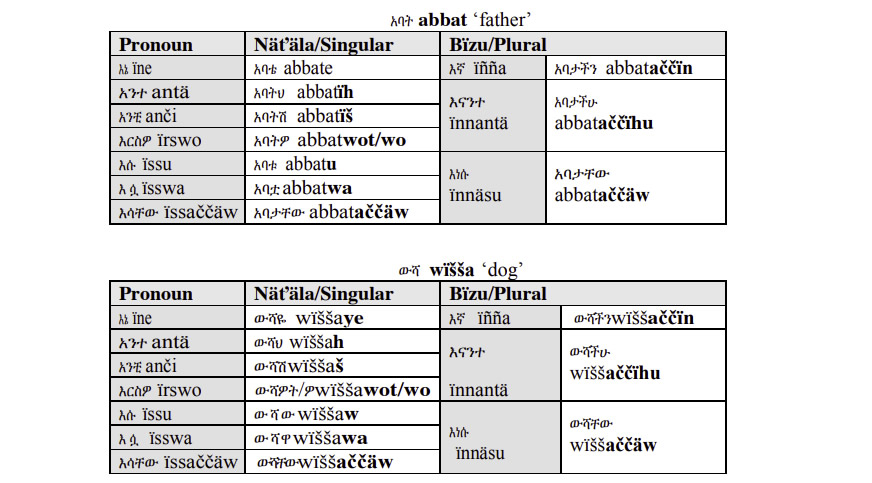Difference between revisions of "Language/Amharic/Grammar/The-Possessive-Forms-(second-method)"
Jump to navigation
Jump to search
(Created page with "<div style="font-size:300%;"> The Possessive Forms (second method) in Amharic </div> __TOC__ The following tables review how to form the possessive forms for abbat and wïš...") |
|||
| Line 4: | Line 4: | ||
The following tables review how to form the possessive forms for abbat and wïšša. You have learned these suffixes in the previous unit. | The following tables review how to form the possessive forms for abbat and wïšša. You have learned these suffixes in the previous unit. | ||
==how to form the possessive forms for abbat and wïšša== | |||
[[File:Amharic-Language-Possessive-Form2-PolyglotClub.jpg]] | [[File:Amharic-Language-Possessive-Form2-PolyglotClub.jpg]] | ||
Revision as of 15:46, 18 September 2021
The Possessive Forms (second method) in Amharic
The following tables review how to form the possessive forms for abbat and wïšša. You have learned these suffixes in the previous unit.
how to form the possessive forms for abbat and wïšša
Note the differences in both the first person singular and third person male, between when the noun ends in a consonant (-e, -u) and when it ends in a vowel (-ye, -w).
ምሳሌ / Example
nouns end in consonant
- bet – bete/my house
- bet – betu/his house
nouns end with vowel
- borsa – borsaye/my bag
- borsa - borsaw/his bag
The above table shows one way of forming the possessive adjective.
Source
https://www.livelingua.com/peace-corps/Amharic/Amharic%20Peace%20Corps%20Language%20Manual-2015.pdf
